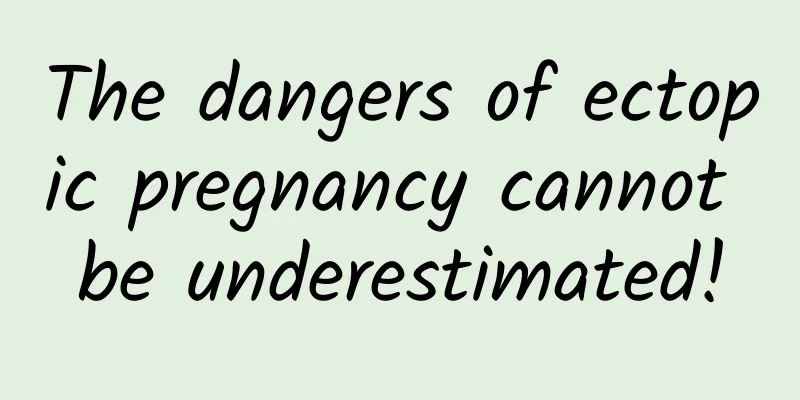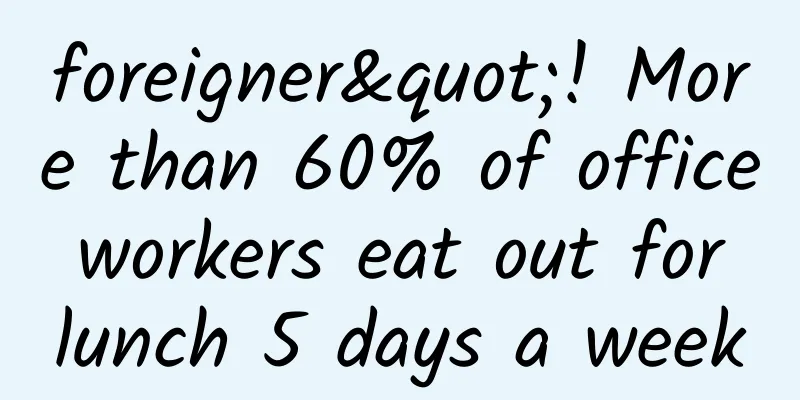How does Traditional Chinese Medicine treat pelvic peritonitis?

|
Pelvic peritonitis is often accompanied by chronic salpingo-oophoritis and chronic uterine myositis, so it often has all the symptoms of chronic pelvic genital inflammation. Pelvic peritonitis brings many inconveniences to life and work, so it should be treated actively. So, how does traditional Chinese medicine treat pelvic peritonitis? The following editor will show you in detail. When treating this disease with traditional Chinese medicine, we should distinguish between cold, heat, deficiency and excess, and treat it based on syndrome differentiation: (1) Damp-heat descending type: Treat by clearing away heat and removing dampness. Prescription: 10 grams of Phellodendron chinense, 10 grams of Achyranthes bidentata, 12 grams of Poria cocos, 12 grams of Plantago seed (package), 6 grams of Alisma orientalis, 12 grams of Paeonia lactiflora, 10 grams of Moutan bark, 6 grams of Artemisia capillaris, and 10 grams of Atractylodes lancea. If the abdominal pain is obvious, add 10 grams of Yuanhu and 10 grams of Chuanlianzi to promote qi and relieve pain; if the appetite is poor and the stool is loose, replace Atractylodes with stir-fried Atractylodes 10 grams, add 18 grams of Poria and 20 grams of raw Coix seed to strengthen the spleen and eliminate dampness. (2) Blood stasis and heat syndrome: Treat by promoting blood circulation and removing blood stasis, clearing away heat and detoxifying. Prescription: 15 grams of Angelica sinensis, 15 grams of Corydalis yanhusuo, 20 grams of Patrinia chinensis, 15 grams of Rhubarb with wine, 15 grams of Red Peony Root, 12 grams of Cyperus rotundus, and 15 grams of peach kernel, decocted in water and taken orally. If there is obvious stinging pain in the lower abdomen, add 10g of frankincense and 10g of myrrh to dissipate blood stasis and stop bleeding; if there is obvious distension and pain in the lower abdomen, add 10g of Chuanlianzi and 10g of Zhiqiao to promote qi and stop pain; if the menstrual flow is scanty, dark in color and clots, add 20g of Leonurus japonicus to promote blood circulation and dissipate blood stasis. If the leucorrhea is heavy and yellow in color, add 15g of Artemisia capillaris and 12g of Alisma orientalis to clear dampness and heat. (3) Cold-dampness stagnation type: Treat by warming the yang and dispelling cold, activating blood circulation and removing dampness. Prescription: 9 grams of fennel, 6 grams of dried ginger, 12 grams of angelica, 9 grams of Chuanxiong, 9 grams of cinnamon twig, 12 grams of red peony root, 10 grams of myrrh, 10 grams of mugwort, 10 grams of Atractylodes macrocephala, 15 grams of Poria, 10 grams of Zedoaria, and 10 grams of Red Rhizoma. Boil in water and take. If the amount of vaginal discharge is large, white and thin, add 10 grams of nutmeg and 10 grams of ginkgo to warm the kidney and stop the discharge. If the waist pain is obvious, add 10 grams of Eucommia ulmoides and 20 grams of Sichuan chuanxiong to nourish the kidney and strengthen the waist. After taking the above medicine orally, the remaining residue can be put into a cloth bag and applied to the lower abdomen, with hot compress for 20 to 30 minutes each time. Rectal drip of traditional Chinese medicine can achieve good results in treating this disease. Prescription: 20g of red peony root, 20g of red vine, 20g of Patrinia scabra, 20g of Taraxacum mongolicum, 15g of Prunella vulgaris, 20g of Salvia miltiorrhiza Decoction 100 ml of the above solution, drip into the anus, 1-2 times a day, 15 times as a course of treatment. It is used for patients with damp-heat or stasis-heat syndrome. If a lump is formed, add 20 grams of Trillium and 15 grams of Curcuma to remove blood stasis and eliminate accumulation; when there are signs of qi deficiency, add 30 grams of Astragalus to replenish qi and strengthen the spleen; if there is cold pain in the lower abdomen, remove the Patrinia and Taraxacum, and add 10 grams of Asarum and 10 grams of cinnamon twig to warm the meridians and dispel cold. The above is an introduction to how traditional Chinese medicine treats pelvic peritonitis. I hope it will be helpful to you. |
<<: How to treat pelvic peritonitis in women
>>: Traditional Chinese Medicine Treatment Methods for Pelvic Peritonitis
Recommend
It turns out that this is how you should eat beef to lose weight! The most reliable food for weight loss
Many people come to ask nutritionists, how can th...
How to prevent and care for patients with hyperplastic vulvar leukoplakia in daily life
After suffering from hyperplastic vulvar leukopla...
Can I get pregnant with endometrial hyperplasia?
Can you get pregnant with endometrial hyperplasia...
What is the reason for missing menstruation?
What is the reason for missed menstruation? This ...
Symptoms of bacterial vaginosis
Symptoms of bacterial vaginosis include increased...
Does a right ovarian cyst hurt? What are the clinical hazards?
Does a right ovarian cyst hurt? What are the clin...
What are the complications of abdominal wall endometriosis?
What are the complications of abdominal wall endo...
Only by exercising your core muscles can you lose weight all over your body! 6 highlights to create a vest line and beautiful legs
Do you also have the idea of "wanting to l...
Office workers should get rid of obesity at work, but be careful not to step on these four dietary landmines! Nutritionist: Eating more vegetables and drinking more water is not enough
The Spring Festival holiday is over and it’s the ...
How to deal with ectopic pregnancy
Ectopic pregnancy requires different treatment me...
What is vaginal itching? Is it fungal vaginitis?
I believe that many female friends have experienc...
Treatment of red changes in uterine fibroids
Uterine fibroids may present with various degener...
Is withdrawal bleeding a miscarriage?
Withdrawal bleeding is not miscarriage. These are...
How to avoid pelvic inflammatory disease?
As we all know, pelvic inflammatory disease is a ...
How harmful is abortion to the body?
Artificial abortion is a common method of termina...









